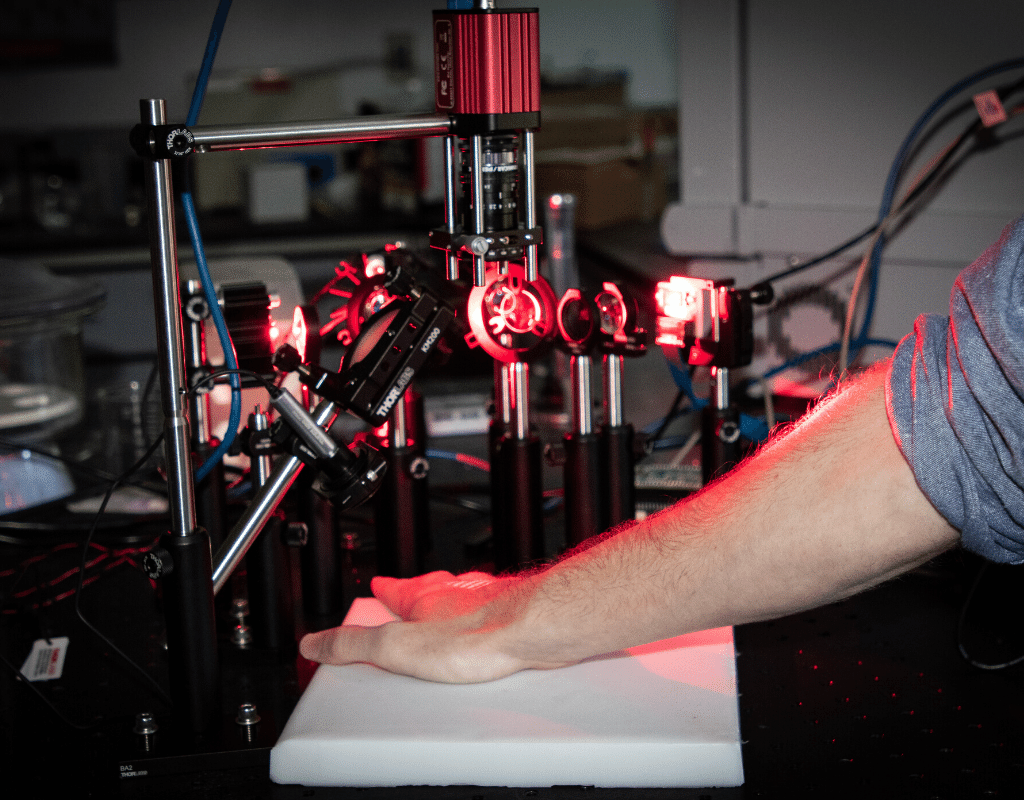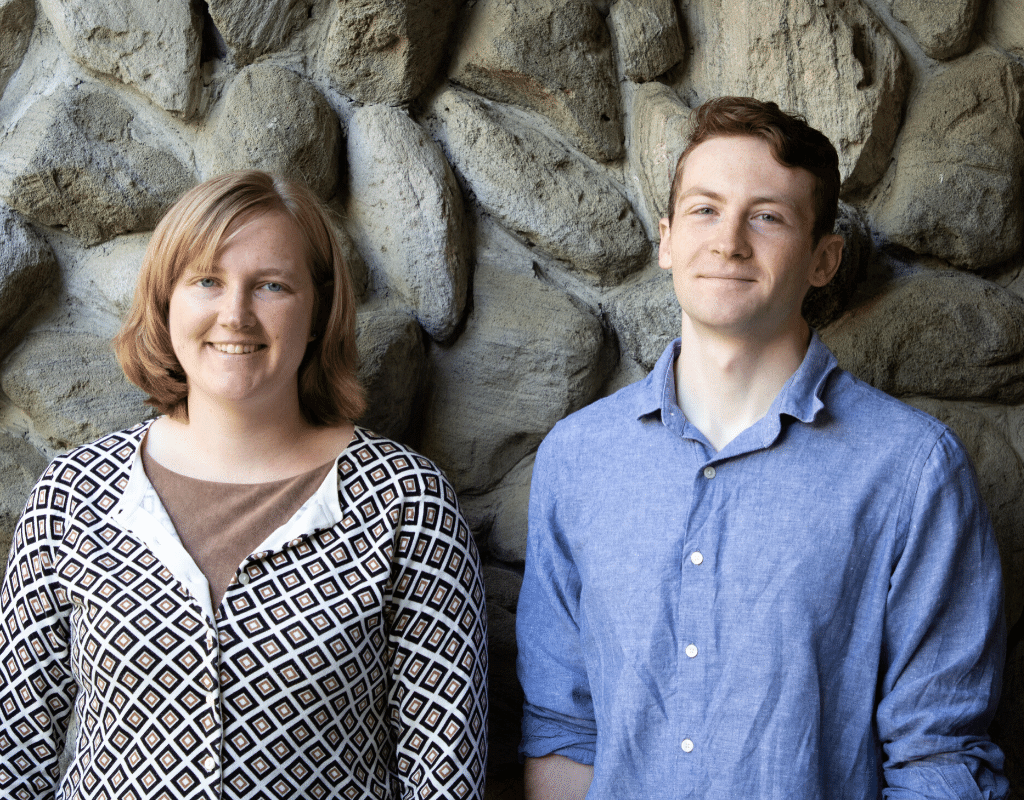
EPSCoR funded researchers are developing a low-cost, non-invasive approach to monitoring Diabetic Polyneuropathy (DPN)
Karissa Tilbury, an Assistant Professor in the School of Chemical and Biomedical Engineering at the University of Maine, is the Principal Investigator of an ongoing NSF-funded Track-4 award titled: Diffuse Optical Imaging for Early Detection of Diabetic Polyneuropathy.
She and her graduate student, Wyatt Austin, recently returned from the first of two visits to the Biomedical Optical Technologies Lab (BOTLab) at Boston University (BU), where they gained invaluable knowledge and experience related to the three-wavelength Time Modulated Spatial Frequency Domain Imaging (SFDI) and Laser Speckle Contrast Imaging (LCSI) system they are currently building.
The SFDI/LCSI instrument can help with the wide-field imaging of blood flow rates and lead to the improved diagnosis of Diabetic Polyneuropathy DPN). DPN is a diabetic condition that leads to the loss of sensation in the lower limbs. Ulcerations, infections, tissue trauma, and even amputation can occur when DPN is left unchecked.
Early detection is possible by monitoring changes in tissue perfusion and blood flow. This is exactly what Tilbury’s project aims to do.
Tilbury and Austin are creating the SFDI/LCSI instrument by combining diffuse optics with laser-based imaging techniques to generate person-specific heat maps that are capable of highlighting DPN markers that include tissue perfusion and blood flow rates in feet.
“Multiple images at different wavelengths are captured and processed to extract tissue scattering and absorption properties which can be used to map oxy- and deoxyhemoglobin levels,” says Tilbury.
Tilbury and Austin are developing a model that will incorporate skin tones and disorders in order to inform imaging data to ensure that the spatial heat maps are accurate and reliable.
This approach is low-cost, non-invasive, and will provide opportunities for routine monitoring. In turn, DPN and small nerve fiber damage may be detected earlier, thus reducing the risk of further complications.
At the beginning of their time at Boston University, Tilbury and Wyatt had a variety of questions to ask their colleagues regarding their research. By the end, Wyatt was able to teach graduate students at the BOTLab about his adoption of Monte Carlo simulations. This development was able to reduce their simulation times drastically.
“We’ve forged long-term research partnerships. Most importantly, this summer has forever altered Wyatt’s perspective of the state of the art in biomedical optics and likely will shape his future career aspirations,” says Tilbury.

